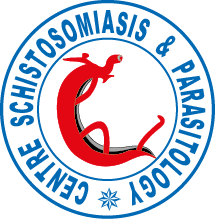Evaluation of circulating cathodic antigen (CCA) urine-tests for diagnosis of Schistosoma mansoni infection in Cameroon.
Abstract
BACKGROUND:
The Kato-Katz is the most common diagnostic method for Schistosoma mansoni infection. However, the day-to-day variability in host egg-excretion and its low detection sensitivity are major limits for its use in low transmission zones and after widespread chemotherapy. We evaluated the accuracy of circulating cathodic antigen (CCA) urine-assay as a diagnostic tool of S. mansoni. In comparison, a low sensitive CCA test (CCA-L) was assessed.
METHODOLOGY:
THE STUDY WAS CONDUCTED IN THREE SETTINGS: two foci with single S. mansoni infections (settings A and B), and one mixed S. mansoni – S. haematobium focus (setting C). Stool and urine samples were collected from school-children on three consecutive days. Triplicate Kato-Katz readings were performed per stool sample. Each urine sample was tested with one CCA and only the first urine sample was subjected to CCA-L. Urine samples were also examined for S. haematobium eggs using the filtration method and for microhaematuria using urine reagent strips. Overall, 625 children provided three stool and three urine samples.
PRINCIPAL FINDINGS:
Considering nine Kato-Katz thick smears as ‘reference’ diagnostic test, the prevalence of S. mansoni was 36.2%, 71.8% and 64.0% in settings A, B and C, respectively. The prevalence of S. haematobium in setting C was 12.0%. The sensitivities of single Kato-Katz, CCA and CCA-L from the first stool or urine samples were 58%, 82% and 46% in setting A, 56.8%, 82.4% and 68.8% in setting B, and 49.0%, 87.7% and 55.5% in setting C. The respective specificities were 100%, 64.7% and 100%; 100%, 62.3% and 91.3%; and 100%, 42.5% and 92.0%. Mixed infection with S. haematobium did not influence the CCA test results for S. mansoni diagnosis.
CONCLUSIONS/SIGNIFICANCE:
Urine CCA revealed higher sensitivity than CCA-L and triplicate Kato-Katz, and produced similar prevalence as nine Kato-Katz. It seems an attractive method for S. mansoni diagnosis.
